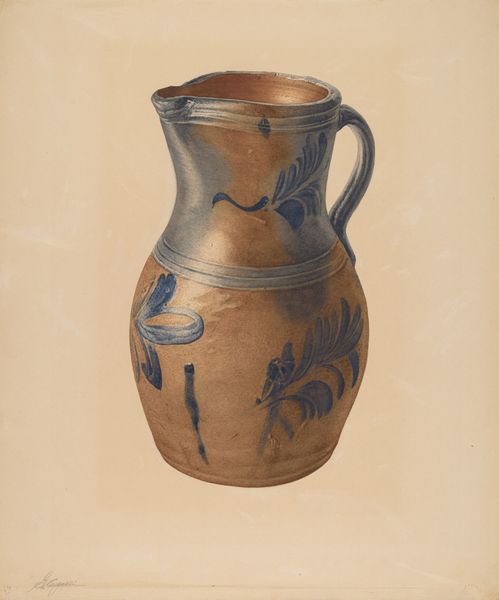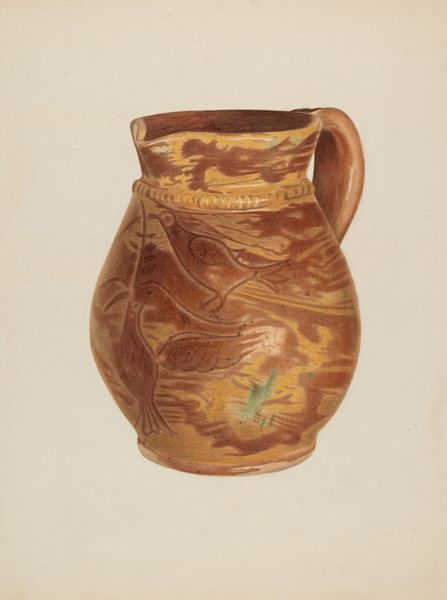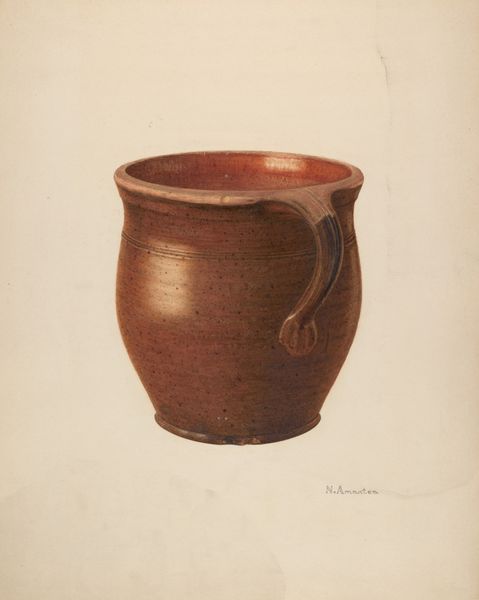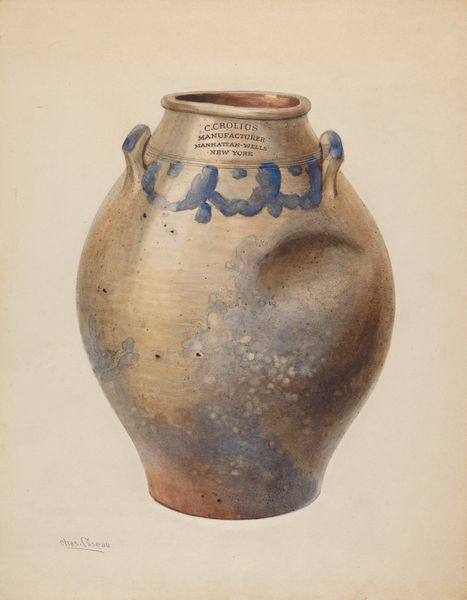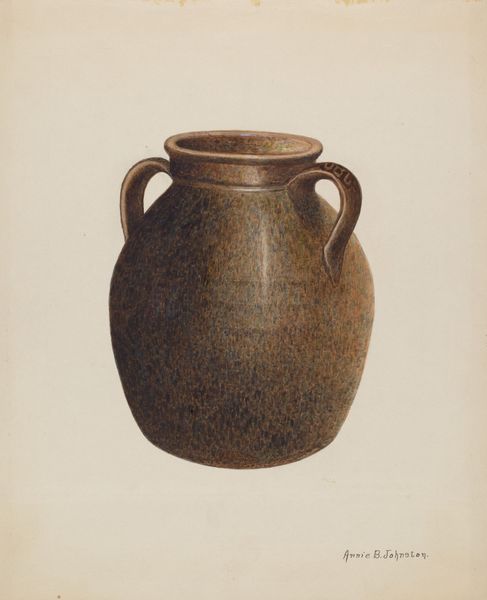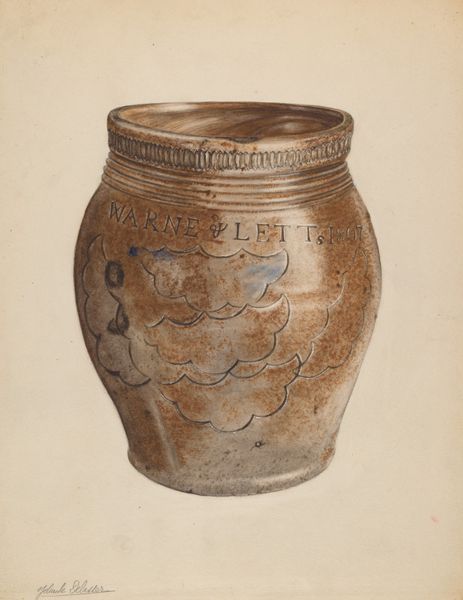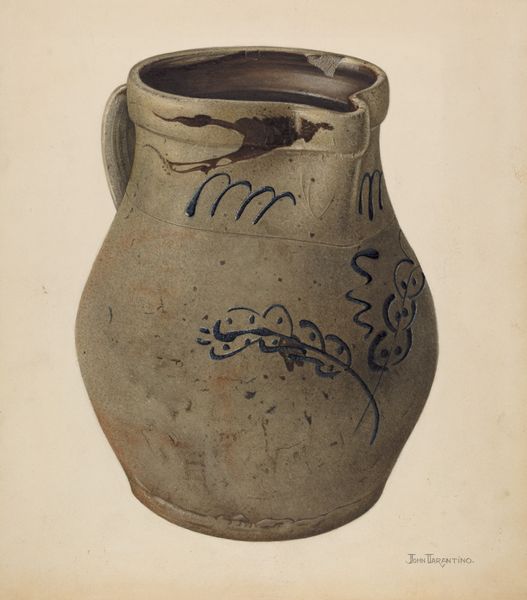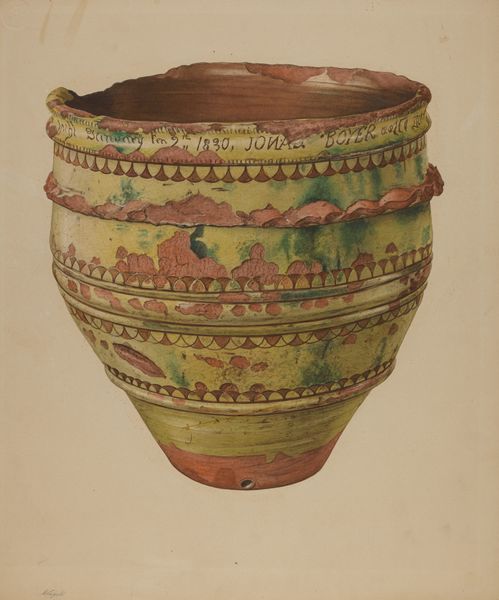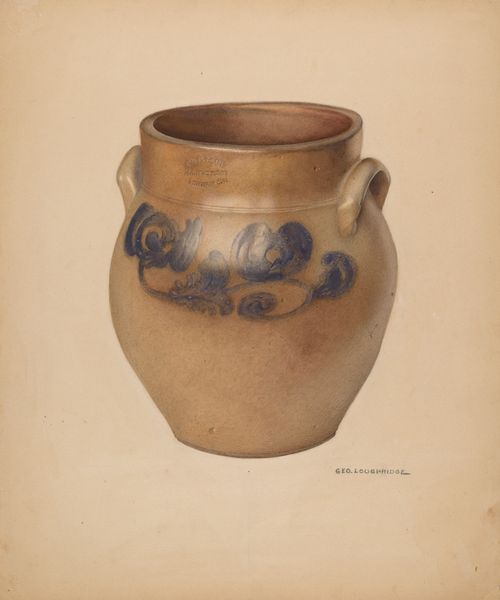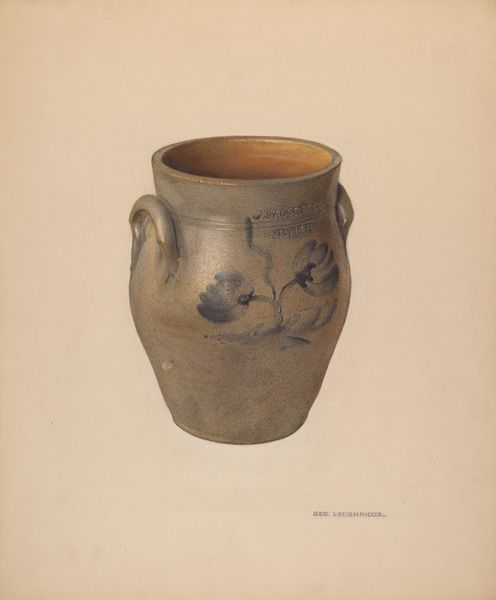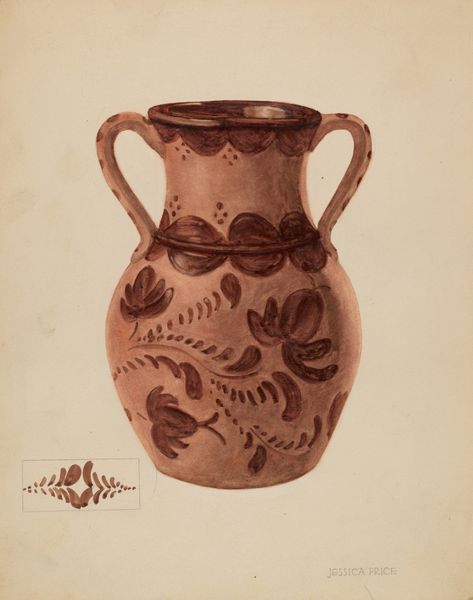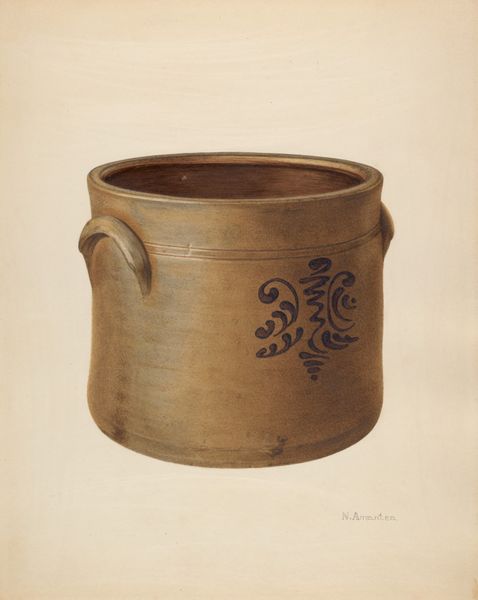
drawing, painting, watercolor, earthenware
#
drawing
#
painting
#
charcoal drawing
#
oil painting
#
watercolor
#
earthenware
#
folk-art
#
watercolour illustration
#
decorative-art
#
regionalism
#
watercolor
Dimensions: overall: 40.9 x 35.2 cm (16 1/8 x 13 7/8 in.) Original IAD Object: 9 1/2" High 5 1/2" Dia(top)
Copyright: National Gallery of Art: CC0 1.0
Curator: It’s fascinating to consider the interplay of line and form here; the rhythmic patterning around the top, contrasted with the rectilinear panel below. The artist’s signature, "Aaron Fastovsky," is visible near the bottom. Editor: Yes, an earthy image, quite literally! This is Fastovsky’s rendering, around 1939, of a "Pa. German Jar." What I find immediately appealing is its unassuming nature; the muted tones evoke a sense of historical grounding and functionality. Curator: Indeed. The use of watercolor, charcoal, and what appears to be oil paint creates varied textures, from the smoother body to the rougher embellishments. The brushstrokes, though precise, are visible. How do you see this fitting within regionalist tendencies of the era? Editor: The Pennsylvania German, or "Dutch," community maintained distinctive cultural traditions reflected in their material culture. Depicting utilitarian objects such as this jar became a way of preserving and celebrating these traditions, placing value on the everyday. Notice also how its image-making contributes to a visual rhetoric of cultural preservation, which was quite politically charged in a pre-war context. Curator: I see your point. From my perspective, the artist also considers balance. The jar isn’t perfectly symmetrical. It possesses intentional imperfections which give it a lively visual character. What might one infer from these variations in structure? Editor: Well, we might connect them to similar debates happening then in art, concerning the machine versus handicraft and what it might mean to represent everyday culture through its ordinary objects. Curator: Perhaps Fastovsky is offering a nuanced take on how one can depict function and its beauty. The application of colors, browns and ochres, enhances depth. Editor: Precisely. Ultimately, it presents a tangible link to cultural identity expressed through folk art. It’s thought-provoking. Curator: Yes. It does invite prolonged visual meditation.
Comments
No comments
Be the first to comment and join the conversation on the ultimate creative platform.
